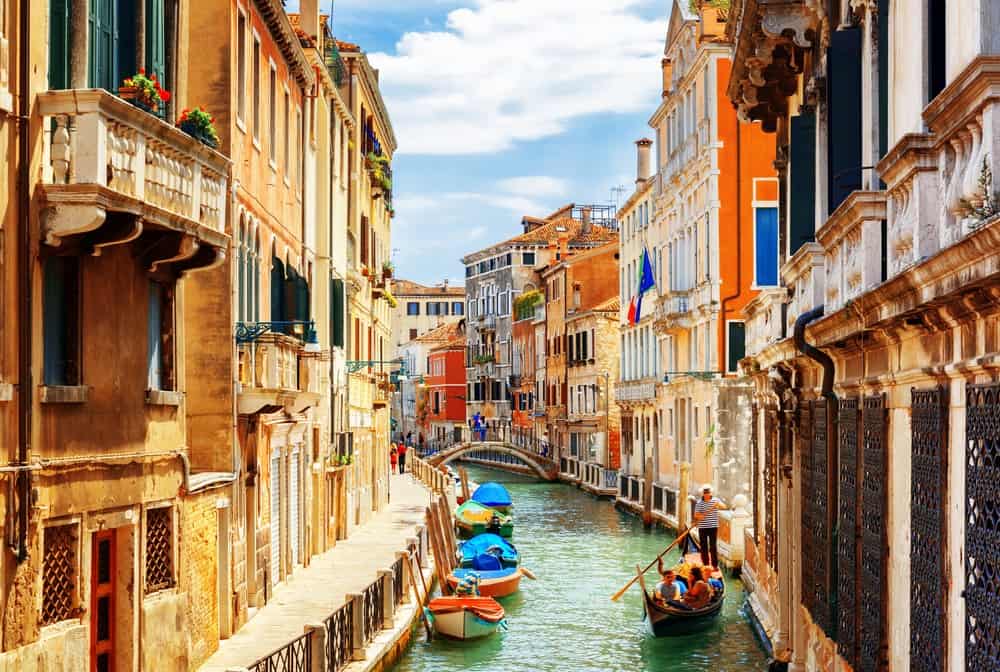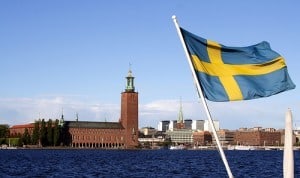Last Updated on May 8, 2023 by Aswetravel
Best Time to Visit Italy – It doesn’t take much to sell anyone on an Italian vacation. With so many different regions, landmarks, and natural areas to explore, a steady stream of tourists visits Italy year-round, from the warm weather in the summer to the cooler temperatures of the winter season. In this article, we’re helping you plan the Italian vacation that’s best for you. We’ll cover when to go, where to go, and what to do. Here we answer, “When is the best time to visit Italy?”
Best Time to Visit Italy
Tourist High and Low Season
Italy has a distinct high and low season for tourism, which depends on the seasons. Summer is high season; winter is low season, as is the case for many Western nations. However, the question was when is the best time to visit Italy.
We recommend visiting Italy during the shoulder seasons (Spring and Fall). During these times, temperatures are slightly milder but still very comfortable. You’ll also find fewer tourists than during summer and much more affordable accommodations.
The truth is that Italy gets extremely crowded during the summer months, which is especially true if you’re planning to visit landmarks such as the Coliseum, the Leaning Tower of Pisa, etc. The crowds of tourists might turn you off these landmarks during summer.
In winter, temperatures drop, and Italy experiences more rain. Additionally, many hotels, restaurants, and shops take shorter hours or outright close. The coldest month is typically January, especially in northern Italy. While you can still experience pleasant weather in southern Italy, it’s still a time you might want to avoid if you’re looking for a sunny European vacation with great weather.
Italy Climate
Being such a long country, the climate in Italy is quite variable depending on where you are. As you can imagine, it’s hotter in south Italy than in the north.
Everywhere in Italy has hot summers with scorching hot temperatures in the south and landlocked regions. Summer temperatures last from May to early September and even longer in the south.
Winters in Italy won’t go below freezing (except in the mountains, which is beneficial for ski season), but there’s a big difference between northern and southern winters. Winters in the south stay quite mild, and some tourists will still enjoy a Roman vacation during the winter season.
Where to Go in Italy
There are so many things to see in Italy. Unless you have a few months, you probably won’t get to it all in one trip. Your best bet is to pick a region or city that appeals to you and plan to visit there first. Our list covers many of the most popular tourist destinations, but it’s far from an exhaustive list. Whether you are looking for history and architecture, religion, culture, scenery, food and wine, there is something for you. Best food city in Italy.
1. Rome

Might as well start with a bang. The most famous and perhaps most historic city in Italy is Rome. Packed with historical significance, awesome restaurants, and vibrant culture, Rome has always been a tourist favorite.
Rome is a fascinating mix of old and new. Walking through Rome you’ll cut in and out of quaint neighborhoods, passing jaw-dropping architecture, with so many places to eat, drink, and sleep.
And the historical significance of Rome speaks for itself. The Sistine Chapel, the Vatican, the Coliseum. It’s tough to find many cities on earth with a denser concentration of historical significance. If you’re looking for a true Italian experience, Rome is tough to beat.
2. Florence
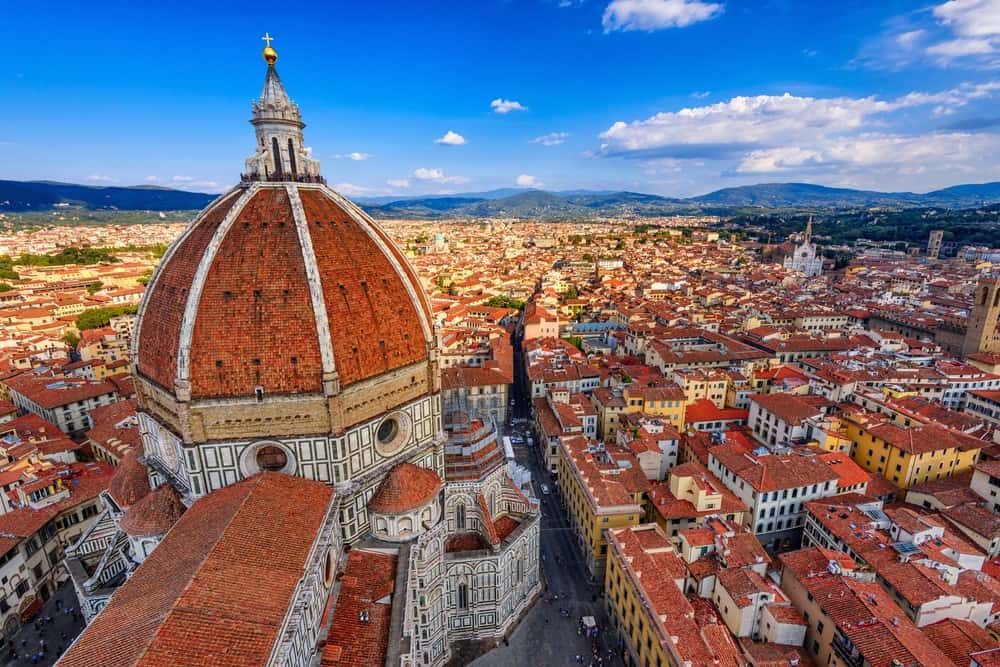
Florence is the capital of Italy’s Tuscany region and many scholars consider it the birthplace of the Renaissance. Needless to say, there’s a lot of history to experience in Florence, from museums to art galleries, to architecture.
Even if you’re burnt out on museums and historic sites, there’s a lot to see and do in Florence. The city has a vibrant, active culture, and it’s just as fun to walk the narrow streets and alleyways, stopping for food and drink as you go. We don’t need to tell you that Italy has fantastic pasta, and Florence is quite popular for its “make-your-own-pasta” schools geared to tourists. A fun way to spend an afternoon and learn one of Italy’s most celebrated culinary arts.
3. Tuscany

Any visit to Florence isn’t complete without exploring the surrounding region. Tuscany is renowned for its rolling countryside, wineries and olive groves, historic architecture, and quaint Italian towns. Exploring Tuscany on a bicycle is the perfect way to soak up this region.
Many tourists make their base in one of Tuscany’s many hill towns and take day trips to explore the region. Popular hill towns include Sienna, Pienza, and Volterra, and each has a bike rental spot, which is our recommended way of seeing Tuscany. You’ll have a blast cutting through the countryside, exploring small Medieval settlements and larger towns or cities. You can book one of many cycling or vehicle tours if you’d prefer a less spontaneous experience.
Many people recommend multiple days to see Tuscany properly, allowing you to see the region at a slower pace (such as by bicycle) while leaving plenty of time for relaxation. There’s no hurry, and it’s difficult to rush through such a large region.
Tuscany is also home to one of Italy’s most famous landmarks, the Leaning Tower of Pisa.
4. Milan
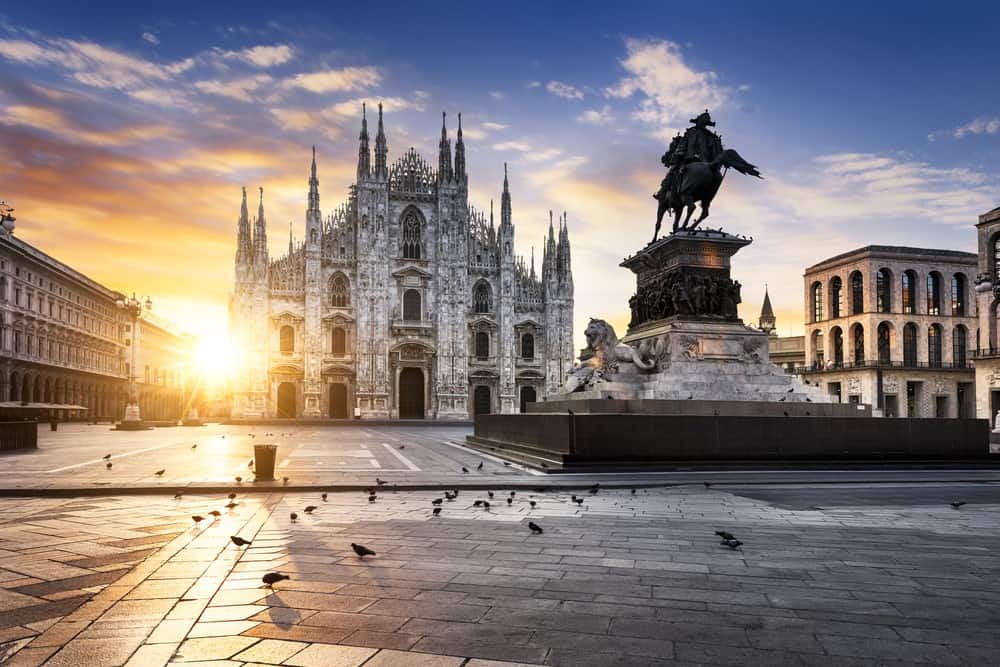
Milan is one of the top tourist destinations in northern Italy. The vibe is decidedly different from down south, but there’s certainly a ton to offer in this unique locale. Milan is a little more “hustle and bustle”, and perhaps that’s the colder temperatures keeping everyone busy. Regardless, tourists can still enjoy walking the winding streets of Milan and the restaurants, shops, and cafes.
Speaking of shops, Milan is most definitely the fashion capital of Italy. Host of the world-renowned Milan Fashion Week, you’ll find that Milan residents are some of the most fashion-forward in Europe. You can try to copy their look in one of Milan’s many shops, boutiques, and plazas.
At the heart of Milan lies the Duomo di Milano (or just “Duomo”), one of Italy’s landmark pieces of architecture and among the most architecturally significant cathedrals in Europe. And if that’s not enough history for you, Milan is also home to Leonardo da Vinci’s “The Last Supper”.
5. Lake Como

Within driving distance of Milan is Lake Como. This beautiful lake is situated at the base of the Italian Alps and offers picturesque views from any direction. Lake Como has always been a destination for the rich and famous, but you don’t have to be a celebrity to soak in the region’s beauty.
Towns, gardens, and lakeside mansions line the shores. We recommend taking a boat tour to catch a glimpse of the center of the lake itself. Nothing quite rivals the view from the center of the lake.
There are also plenty of spots to go for a dip! As long as you’re there during the warmer months, the water temperature is great and you can fully enjoy the Mediterranean climate.
6. Venice
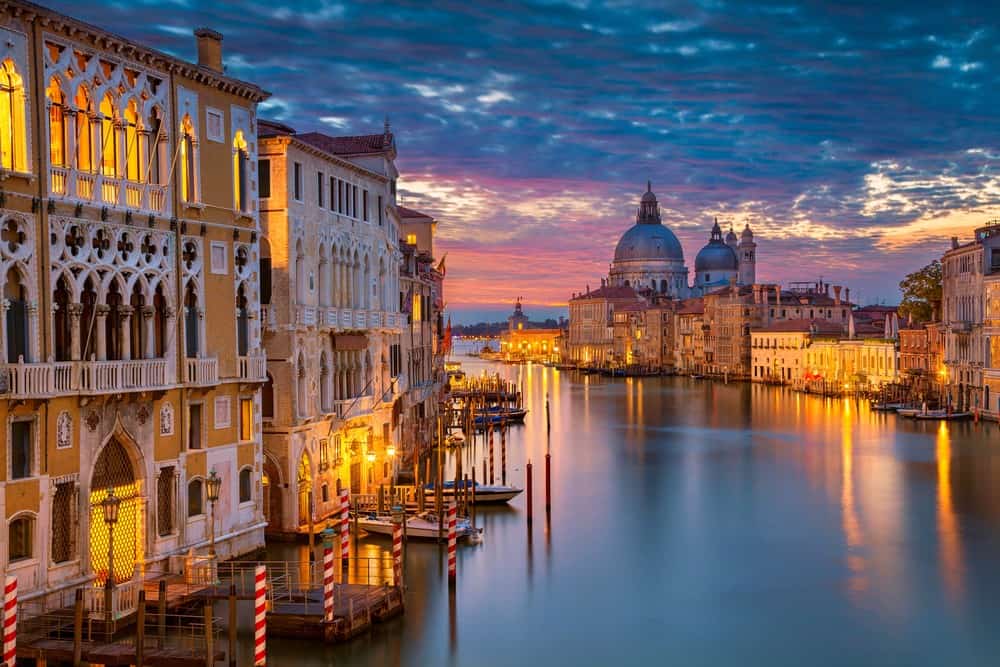
One of the most unique destinations in Italy, Venice is famous for its canals, lined with old-fashioned gondolas and boat traffic of all sorts. Venice is located in Northern Italy, about 3 hours east of Milan on the Adriatic Sea.
Venice is also quite small. You can walk the entire city is well under a day (at least the main tourist area). You’ll traverse narrow alleys, rounded bridges, and river-side boardwalks. The architecture is unique, and not just because it’s a city built on the water.
Of course, there’s nothing wrong with being a tourist cliché and taking a gondola ride. We’d recommend it! You are a tourist, after all, so you might as well embrace it.
7. Cinque Terre
Cinque Terre is always near the top of any Italian travel guide. Cinque Terre is a region in northwest Italy where five towns (the name means “Five Lands”) converge along the hills that fall into the Mediterranean Sea. Each town sports colorful, historic architecture, and is one of Italy’s overall most scenic locations.
Tourists can hike through the region or take a train to each town. Each town is quite small, and it’s more than doable to see the entire region in a single day. If you’re hiking, there are many ways to reward yourself, too, with cafes, gelatos, restaurants, and bars.
8. Pompeii

Continuing our long list of Italy’s immense historical significance – we have Pompeii. Located under Mt. Vesuvius (an active volcano), Pompeii is an ancient civilization famously preserved by the erupting volcano, which buried the city in a thick layer of ash. This eruption occurred in 79 AD, making Pompeii a fascinating “snapshot” of how people lived centuries ago.
It doesn’t take long to see Pompeii, but don’t expect to forget about it anytime soon. You can choose to walk through on foot or book one of many guided tours. We strongly recommend a guided tour as the best way to soak up as much knowledge as you can.
9. The Dolomites

Not known for having mild temperatures, some tourists would be surprised to learn that Italy has world-class downhill skiing. The Dolomites are in Northern Italy, and this steep, jagged mountain range is home to many ski resorts, resort towns, and tourist areas. But don’t be intimidated by their massive stature. The ski resorts have terrain suitable for beginners as well.
And if you’re not into skiing, the Dolomites are still worth a visit. The region is home to mountain towns, gorgeous views, and plenty of climbing & hiking opportunities. Many tourists visit the Dolomites during the summer months purely for the outdoor lifestyle. The Dolomites have a laid-back mountain culture that is very welcoming to tourists.
Best Italy Festivals and Events
You wouldn’t be surprised to hear that Italy is packed with events and festivals all through the calendar year. Here are a few of our favorites, but there are many more of note:
Carnevale – You might think of Carnevale as a South American tradition (specifically Brazil), but the event is a Christian celebration with festivities around the world. The festival takes place in late February or early March, just before the beginning of Lent. One of the best places for Carnevale in Italy is in Venice, where celebrations, festivals, and grand parades line the streets.
Milan Fashion Week – Milan is one of the fashion capitals of the world, and Milan fashion week is a must-see for anyone interested in the latest trends. It is one of the Big Four Fashion Weeks with Paris, New York, and London, meaning it will feature attendees from all the biggest brands.
If you can’t find tickets to the main shows during Fashion Week, there are plenty of events and celebrations held across the city to attend. Milan Fashion Week is a semi-annual event featuring a spring show in Winter (February and March) and a fall/winter show in fall (September and October).
L’Ardia di San Costantino – L’Ardia di San Costantino takes place each year in northern Sardinia. This is a historic celebration of one of Italy’s most famous victories. What’s so special about this event is how true it has stayed to its historical roots. Tourists can watch the horses race about the grounds to a barrage of gunfire. It’s also a region-wide celebration, with plenty of food vendors and entertainment options. Well worth the trip to Sardinia in July.
Best Time to Visit Italy
Thanks for reading our guide to visiting Italy. Italy will always retain its status as a worldwide tourist hotspot. We recommend visiting Italy in spring or summer, with the former being the better option for affordable accommodations and for avoiding the large crowds. Use our guide to plan your ultimate Italian vacation!
Best Time to Visit Italy FAQs
How Much Time Should I Spend in Tuscany?
Consistent with our advice above, we recommend allocating a few days to see Tuscany. At least three to five days should be enough. Tuscany is such a large region, dotted with so many smaller towns, villages, and larger cities (Florence).
It’s best to explore the Tuscan countryside by bicycle, which gives you time to truly soak in the sights and sounds and explore off the beaten path. For these reasons, we think the ideal Tuscan experience is at least three days and could easily be longer.
What is the Best Italian Food in Italy?
Of course, this is a loaded question. Italy features all sorts of fantastic food options all across the country. Pasta, pizza, gelato, and those are just the most famous options. The truth is that finding the best food in Italy is all about knowing where to look. There are plenty of tourist traps that overcharge for sub-par food, which means you also need to know what to avoid.
Our top tip is to read customer reviews for each location you visit. These reviews offer unbiased perspectives with real photos of the foods and real opinions from those who have eaten there. If you love food, visit these Italian cities.
Best Festivals in Europe
Turin Italy Forgotten Food Capital
Best Time to Visit Bergamo Italy
Bergamo – The City Milan Doesn’t Want You To Visit!
How Do I Use My Cell Phone While Traveling to Europe
